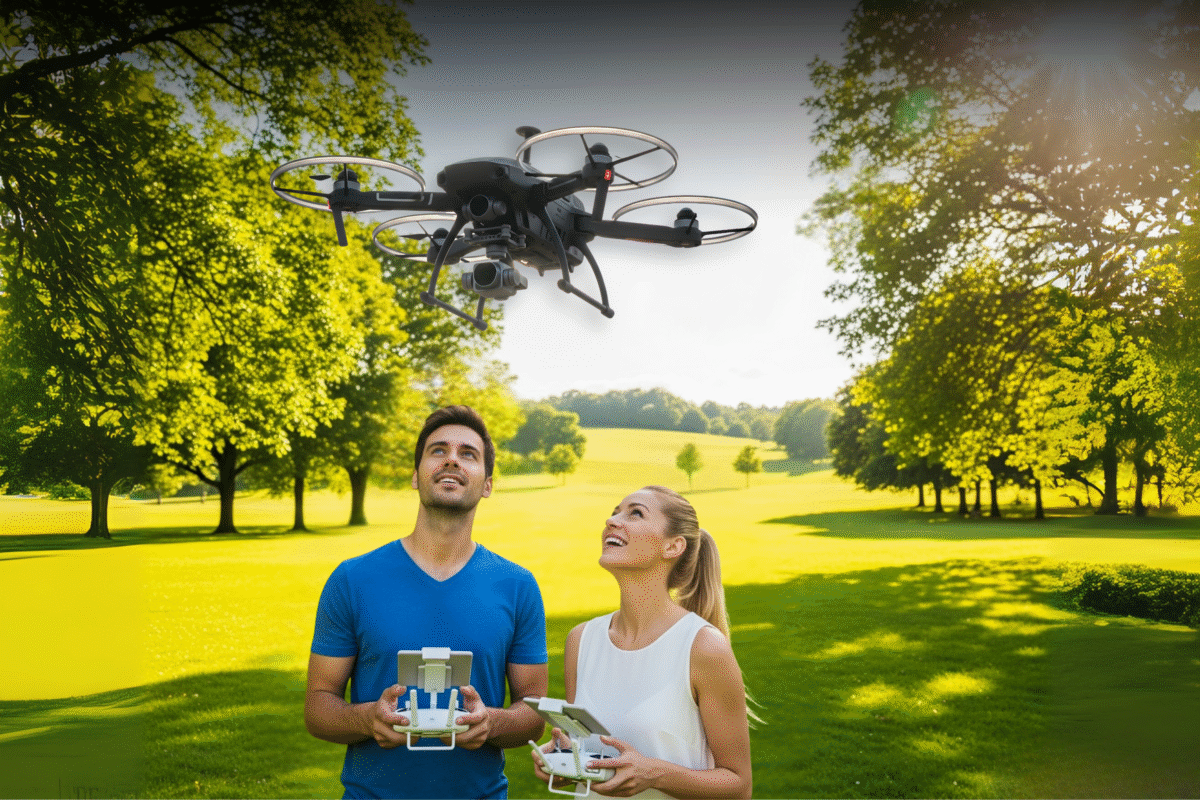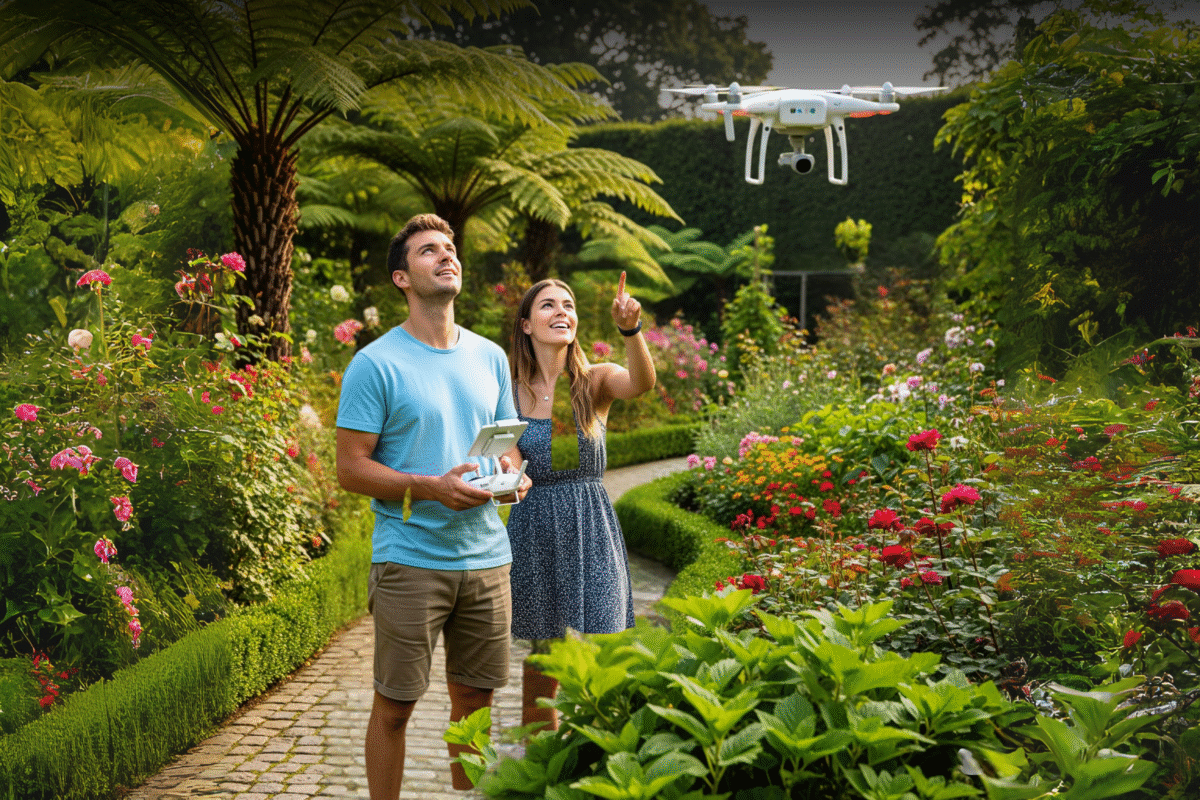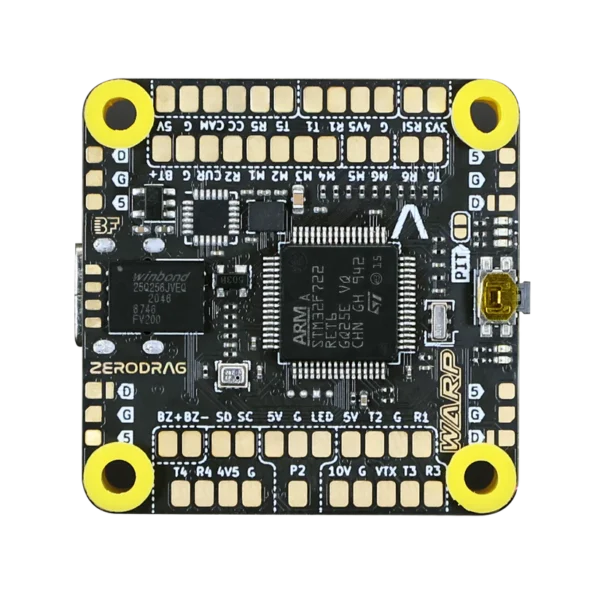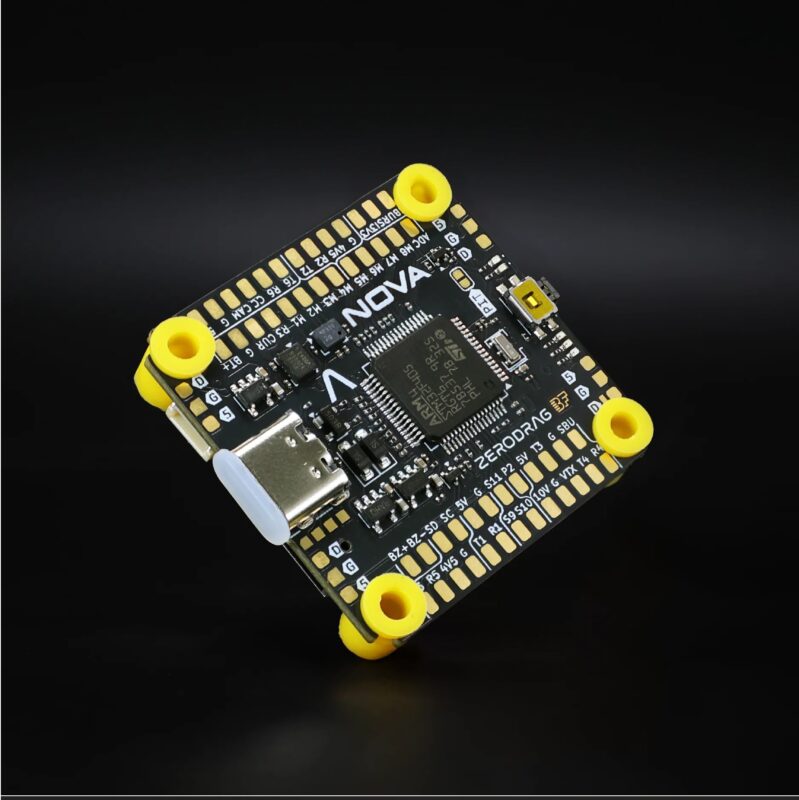Drones
What is a Flight Controller? A Simple Guide for Drone Lovers
The flight controller is the brain of your drone, turning raw power into smooth, smart, and stable flight.
Drones have become more than flying gadgets—they help farmers, filmmakers, and even scientists or travel vloggers. At the heart of every drone is the Flight Controller, the brain that keeps it flying smoothly. Without these little powerhouse parts, your drone would not be able to know how or where to fly.
Let’s explore in this blog how the Flight Controller works, why it’s essential, and how you can choose the right one.
Understanding the Flight Controller
The Flight Controller is a power supplier and the brain of the drone. It reads signals from sensors, like the gyroscope and accelerometer. Then, it instructs the motors on how to move. This makes the drone stable and provides a connection that helps it fly in the right direction.
Without a high-quality Flight Controller, there are many chances that drones can crash or lose connection. That’s the reason why choosing the right one matters.

Drone Flight Controller & Pixhawk Flight Controller
Many brands make Drone Flight Controllers, but Pixhawk is a very popular name. It is compatible with a wide variety of drones and is open-source. A Pixhawk Flight Controller increases your control and safety, whether you fly for business or pleasure.
Benefits of Pixhawk:
- Easy to customize with open-source software
- Supports many sensors and GPS units
- Offers auto-pilot and return-to-home features
- Good for both beginners and pros
Choosing a Drone Flight Controller like Pixhawk helps you reduce waste. When choosing to buy new drones, you can upgrade just the controller. That’s better for your wallet and the planet!
Why Every Drone Needs a Flight Controller
If the motors are the muscles of a drone, the Flight Controller is the brain. Some important points:
- Keeps the drone stable during windy conditions or quick moves
- Helps with GPS navigation and auto-flight routes
- Processes data quickly, so the drone can respond in real-time
- Saves power by managing motor speeds efficiently
- Improves safety, especially during long flights or low battery situations
With the right controller, your drone can do amazing things with less energy.

Flight Controller Features to Look For
When users plan to buy a Flight Controller, here are some eco-smart and functional features to chec
- Sensor support: Look at these seniors in every controller, like gyroscopes, accelerometers, barometers, and GPS input
- Firmware compatibility: Controllers like EdgeTX or Betaflight are flexible and open-source
- Lightweight design: A smaller controller uses less material and saves battery power
- Upgrade options: Make sure the controller lets you add new parts instead of replacing the whole unit
Buying smart means less e-waste and more value.
RadioMaster Pocket and Zerodrag Nova: Smart Choices
Two great tools that pair perfectly with top Flight Controllers are:
- RadioMaster Pocket Radio Controller (M2)
Comes with EdgeTX firmware and a 2.4GHz frequency for smooth and safe drone communication. - Zerodrag NOVA – BOOST Stack
A compact, smart unit that includes a 55A ESC and F4 flight controller. It’s durable and eco-friendly.
These devices make flying safer and more fun without harming the environment.
How to Install a Flight Controller
Installing a Flight Controller is easy with the right tools and a bit of care:
- Disconnect the battery before starting
- Mount the controller using soft pads to reduce vibration
- Connect all sensors and GPS
- Load firmware like EdgeTX or Betaflight
- Test everything before your first flight
- Take your time and reuse parts when you can to reduce waste.
Eco-Friendly Drone Flying Tips
If you love flying drones, here are some ways to be kind to nature:
- Use rechargeable batteries to cut down on waste
- Recycle old parts like motors and props
- Choose lightweight drones for better energy use
- Fly in open areas to avoid hurting wildlife
- Upgrade your drone instead of replacing it
A smart flyer is a green flyer!
1. Zerodrag Warp F7 Flight Controller
- Features: No soldering needed. Easy to set up. Uses a fast F7 processor for quick response. Comes with a 12-month warranty. Made in India.
- Uses: Controls the drone’s movements. Good for racing and freestyle drones.
- Goal: To give smooth, fast, and easy drone control without complicated wiring.

2. Zerodrag Nova F4 Flight Controller
- Features: Uses an F4 processor. Compact and reliable. Supports many drone types. Easy to install.
- Uses: Controls basic and advanced drone flights. Works well for beginners and hobby flyers.
- Goal: To provide steady and simple flight control at an affordable cost.

Fly smarter with Vega Drones. Buy today!
Conclusion
The Flight Controller is the heart and brain of every drone. Whether you select a new or a powerful Pixhawk Flight Controller, it’s a smart feature and eco-friendly choice to upgrade your drone controller. Look for features that save power, offer flexibility, and reduce waste. Pair your controller with tools like the RadioMaster Pocket and Zerodrag Nova Stack to enjoy safe, smooth flights. Always remember one thing: Your every small step changes and makes the world a cleaner, greener place.
FAQs
1. Think of it like the brain of the drone. It takes input from sensors like GPS, gyros, and barometers and helps the drone stay level and fly properly.
2. Without it, the drone wouldn’t know which way is up—or how to stay in the air at all.
1. Honestly, yes. Pixhawk is beginner-friendly but still powerful enough for advanced stuff later on.
2. It’s open-source, so you can tinker with it as you learn.
3. Most importantly, it plays nicely with a lot of accessories and add-ons, which is great as you upgrade.
1. Absolutely.
2. If your drone frame and motors are still good, you can just swap in a better controller.
3. It’s a smart move and a more sustainable one, too—less waste and more value.
1. Good question.
2. The flight controller handles decision-making: balance, direction, and overall control.
3. The ESC (Electronic Speed Controller), on the other hand, just controls how fast the motors spin.
4. They work together, but they do different jobs.
1. For sure. Start with rechargeable batteries—they cut down on waste big time.
2. Fix or upgrade parts instead of tossing the whole thing when something breaks.
3. Stay away from wildlife zones when flying, and avoid disturbing birds or animals.
4. Oh, and recycle those old wires, props, or broken parts whenever you can.

